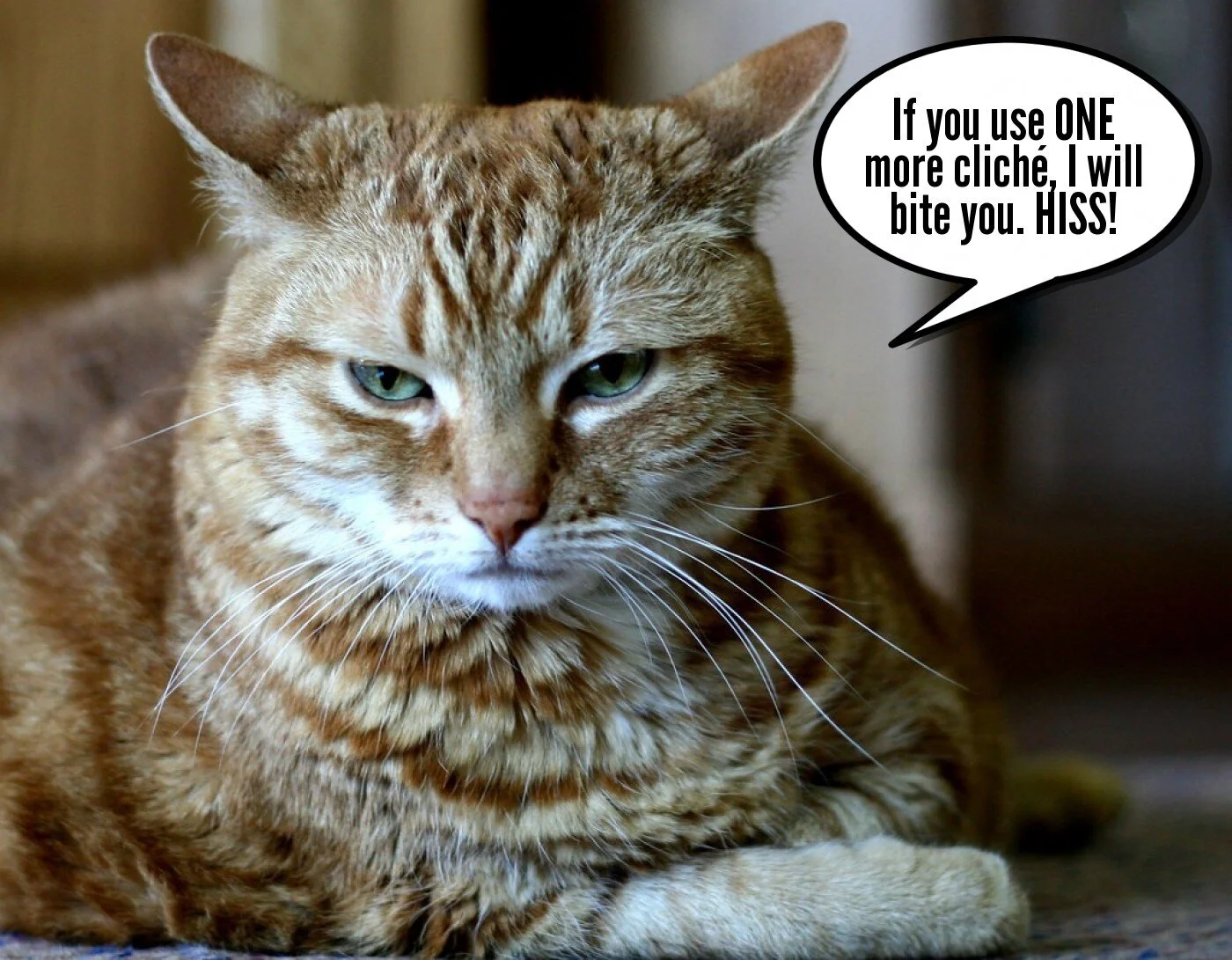Why Clichés Ruin Good SaaS Copywriting (& What to Do Instead)
"Cat" by Chris Erwin (Creative Commons)
Industry leading. Disruptive. Purpose-built. And my all-time favourite: “state of the art.” Clichés like these are so commonplace in the software and technology vernacular that, when encountered, most can barely muster the energy to emit a guttural groan. Yet virtually every software and technology company is guilty of using clichés in their copywriting.
Why? Because clichés are a (seemingly) simple way to sum up complex subject matter in a series of “fun,” roll-up phrases. But just like mainlining a flat of Oreos three hours into quarantine, there will be consequences. Keep reading to learn why clichés make your readers disappear faster than those sweet, sweet Oreos (and what to do instead).
“Most sensational subjects have been treated to death. Result: a minefield of clichés. And, as novelist Martin Amis tells us, good writing is a ‘war against cliché.’”
Why Clichés Don’t Work
In essence, clichéd phrases—which any good SaaS copywriter should delete upon discovery—take up precious space that you could be using to explain the life-altering benefits of your product. Clichés are vague, they make you sound boring, and they make you interchangeable with any other software or tech company. Most importantly, clichés don’t tap into your readers’ perpetual curiosity, their innate need for novelty.
When you’re trying to light up the “novelty center” of your readers' brains—known as the substantia nigra/ventral tegmental area (SN/VTA)—the last thing you want is to sound like Gilbert Gottfried reading a balance sheet with an encyclopedic level of enthusiasm.
“... we’re biologically driven to investigate our world rather than merely respond to it. This drive is the basis of human curiosity, which is baked into us. Our brains are hardwired to want to satisfy our curiosity. That’s what makes it such an effective buying trigger.”
What to Do Instead
Now that you know a bit about one of the most powerful buying triggers, our innate desire for curiosity, you can begin to understand why serving up the same ole hackneyed phrases makes your content fall flat on its face. So, if clichés don’t work, what does?
Specific, plain-English wording works better than vague generalizations and tired, overused phrases. Aim for brevity and clarity above all else. Present your points as clearly and compellingly as possible, with tangible examples to help your reader visualize. (Without getting too scientific, readers tend to be more engaged when they visualize, so bonus points if you can pepper in a simile or metaphor.) Here are a few examples:
Don’t Say: Our purpose-built technology [What does that even mean?] leverages state-of-the-art [Cliché alert!] AI technology to boost efficiency and profitability. [I’m not sure if this will solve my problems…]
Do Say: Our software uses AI [specific technology] to root out supply-chain inefficiencies [what it does in plain English] in hours vs. weeks [How you do it better/faster/cheaper]—so you can ramp up production without setting foot in the factory. [Answers: what’s in it for me?]
Don’t Say: Our state-of-the-art SaaS technology [Huh?] is disrupting [Look, another disruptive technology.] the life sciences industry. [I still don’t know what you do!]
Do Say: Our AI software [clear, to the point] helps pharmaceutical companies [That’s me!] get life-saving therapeutics to market faster—without having to jump through more hoops with the FDA. [Hot dog! That’s what WE need.]
The Final Verdict
Avoid clichés like the communal dip bowl at your next office gathering. “State of the art” means nothing. “Industry leading” is overused. No one is “disruptive” if everyone says they are. Humans love novelty—we crave it—and no one has time to decode jargon. Get specific. Get to the point. Say it in a different way. Your readers will thank you. And Symba the Cat won’t bite you. (Unless you pet his stomach for longer than three seconds. In that case, he will definitely bite you.)
Want More SaaS Copywriting Goodness?
If you’d like to see more examples of compelling, non-cliché copywriting for software (SaaS) and technology, ask to see my portfolio. Or, if you prefer to get started right away (aren’t you eager!), get in touch.

